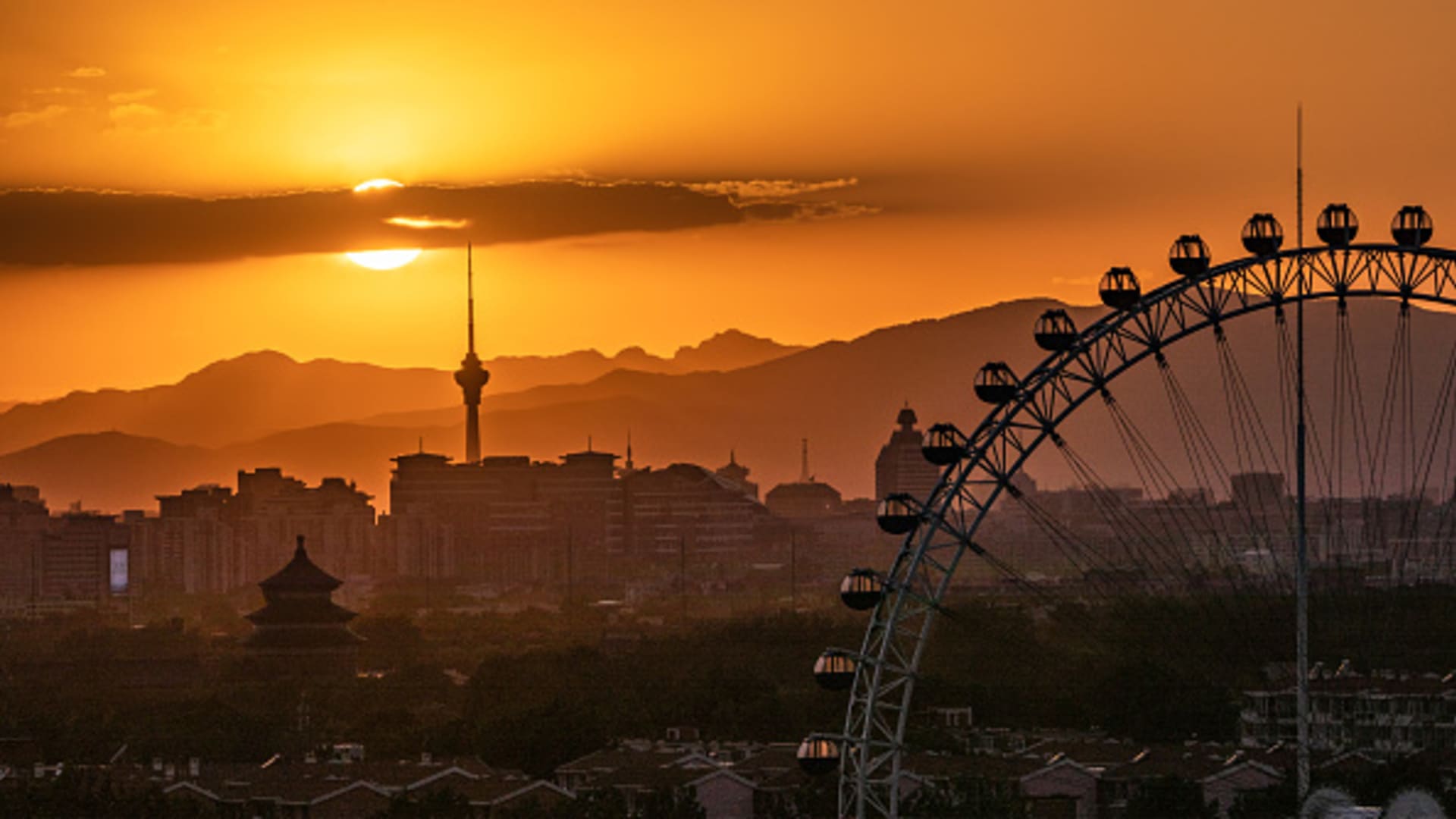
The sunset glow is seen over buildings and a ferris wheel on May 13, 2022 in Beijing, China.
Vcg | Visual China Group | Getty Images
China’s factory activity contracted for a fourth consecutive month in July, while non-manufacturing activity slowed to its weakest this year as the world’s second-largest economy struggles to revive growth momentum in the wake of soft global demand.
The official manufacturing purchasing managers’ index came in at 49.3 in July — compared with 49.0 in June, 48.8 in May and 49.2 in April — according to data from the National Bureau of Statistics released on Monday. July’s reading was slightly better than the 49.2 median forecast in a Reuters poll.
Monday’s figures also showed China posting its weakest official non-manufacturing PMI reading this year, coming in at 51.5 in July — compared with 53.2 in June, 54.5 in May and 56.4 in April. A PMI reading above 50 points to an expansion in activity, while a reading below that level suggests a contraction.
“Although China’s manufacturing PMI rebounded to 49.3% this month, some enterprises in the survey reported that the current external environment is complicated and severe, overseas orders have decreased, and insufficient demand is still the main difficulty faced by enterprises,” Zhao Qinghe, a senior NBS official, wrote in an accompanying statement Monday.
These readings for July point to the “tortuous” economic recovery that China’s top leaders described last Monday, which the Politburo attributed to insufficient domestic demand, difficulties in the operation of some enterprises, many risks and hidden dangers in key areas and a grim and complex external environment.

Employment sub-indexes for both manufacturing and non-manufacturing sectors declined in July, pointing to lingering softness as youth unemployment hit successive record highs in China. The service industry — a major sector that hires young workers — sub-index slowed 1.3 percentage points in July from the previous month, according to the NBS.
More worryingly, business expectation among the non-manufacturing sectors declined from the previous month. A similar production and business activity expectation index for manufacturing sectors, though, saw an increase of 1.7 percentage points from the previous month, which the NBS attributed to policy support to grow private enterprises and expand domestic demand.
Extreme weather
The NBS said construction activity, which declined 4.5 percentage points in July from the month before, was hit by extreme weather conditions.
“Downward pressure on manufacturing eased slightly. But this was more than outweighed by a sharp deceleration in construction and cooling services activity,” said Julian Evans-Pritchard, head of China at Capital Economics.
“Policy support should drive a turnaround later this year. But with officials taking a restrained approach to stimulus, any reacceleration in growth is likely to be modest,” he added.

Still, there were some nascent green shoots.
There were month-on-month improvements in the new orders and raw materials inventory sub-indexes, which helped underpin the slightly better-than-expected manufacturing PMI reading.
The purchase price index and ex-factory price index of major raw materials saw meaningful increases from the previous month, the NBS said, pointing to an improvement in pricing power.
Correction: This story was updated to correct the month for the latest PMI data.
